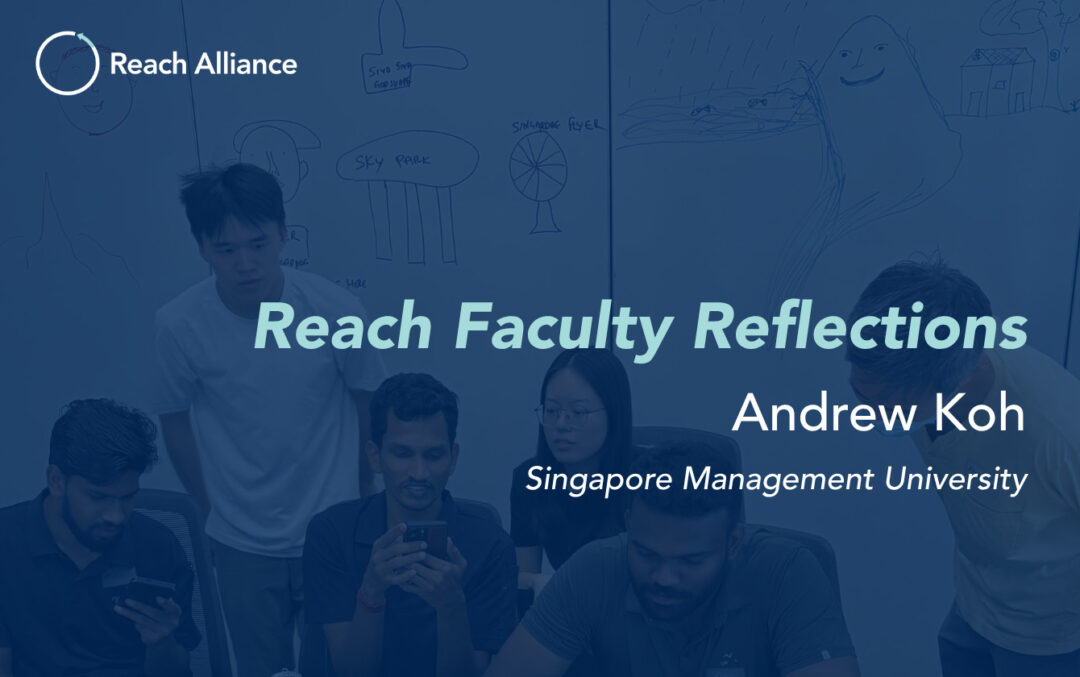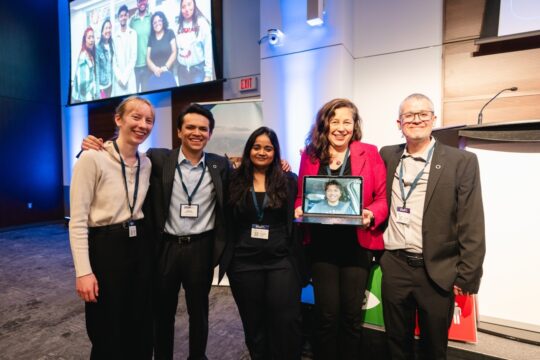
Digital Technologies and SDGs
Author: Andrew Koh, Singapore Management University
Systematic reviews of how artificial intelligence (AI) has contributed to the United Nations Sustainable Development Goals (SDGs) have multiplied in recent years. Mariana’s comments sparked my curiosity to examine these reviews to uncover whether theoretical frameworks exist in the development, implementation, or maintenance of AI or digital technologies in general. I find that such systematic reviews are typically framed around the what — the SDGs being addressed. Impact measurement, in turn, tends to focus on the targets and indicators derived from these goals. However, to ensure scalable and sustainable impact, we need to return to the how — the means and mechanisms through which these goals are (or are not) achieved. Even when such reviews include the how, it typically gets articulated through technical solutions or methods. My comments seek to broaden the how through underexamined dimensions such as the origin, objective, and ownership of these solutions.
Origin
By and large, development solutions are top-down and driven by governments, industry, iNGOs, or institutional actors — tending toward blueprints rather than organic participatory development. This approach often emphasizes standardization and efficiency, sometimes at the expense of local context, cultural relevance, and long-term community ownership. Such approaches may fail to account for local priorities, ways of knowing, informal systems, and the nuanced realities of peripheral communities. A rebalancing is required, where we integrate bottom-up, participatory efforts alongside technical and institutional expertise.
Open-source, cloud computing and infrastructure advancements have lowered the barriers to participatory innovation, allowing community-based organizations, cooperatives, and citizen scientists to prototype solutions. This democratization of technology positions communities not simply as recipients of solutions, but as co-creators in an iterative journey. Technological advancements are now accessible beyond the deep pockets of corporations or academic institutions. This drives higher co-ownership and thus enhances the scalability and sustainability of solutions. When communities are involved in shaping the development of solutions and evaluating outcomes, ethical reflections are also better embedded.
Building on Joe Wong’s suggestion of “scaling from the periphery,” we can consider a local, regional, or global periphery. As we radiate outward, the challenge of synthesizing generalizable insights across more diverse contexts and cultures becomes increasingly nontrivial. To help support and accelerate this synthesis, we can investigate generative AI’s potential to democratize the distillation of insights. The StoryBuilder project provides a concrete example of how this can work. Overney and colleagues transformed 2,480 community feedback segments from a contentious school‑rezoning process into 124 first‑person composite stories through a five‑stage human‑AI pipeline that included data processing, AI‑generated themes edited by humans, classification, story generation and human review (Overney et al., 2025). This kind of human‑AI narrative synthesis illustrates a decentralized model of networked learning with experts in the loop towards a shared and situated intelligence. Communities are thus not just case studies, but co-theorists in their own right. It is crucial however, for experts to provide safeguards to ensure responsible and grounded insights.
Objective
Another dimension of the how involves examining a solution’s objectives. We often frame digital technologies as a means for increased access and efficiency. What if we shifted our paradigm to view them as catalysts to amplify and unlock the latent value within communities? This aligns with circumstances highlighted in Joe’s comments where the resources and benefits of development are in situ. While dominant economic paradigms have long prioritized financial capital, technology has now facilitated the means to monetize natural capital, such as forests, mangroves, or peatlands, through community-driven participation in carbon credit markets.
Another possible shift involves generative AI, which instead of adopting a consultant model offering answers, can act as a coach. Implicit within its current description is the generation of information, which makes AI resemble a consultant model. However, what enabled this breakthrough in language generation was the introduction of the transformer architecture, which allows models to better understand the context and relationships between words. This deeper contextual awareness made it possible for generative AI to grasp meaning, nuance, and intent across complex, layered human communication. As a result, we can now position generative AI not merely as a tool for producing solutions, but as an active coach that guides users through reflection, exploration, and the co-creation of insights. Instead of providing the solution, a coach facilitates a process and conditions for self-discovery and ownership.
Thus, the utility of digital technologies goes beyond providing solutions. They can now possibly help communities to refine their own problems, make sense of trade-offs that reflect their values, and visualize potential futures. This resonates deeply with asset-based community development, where communities are positioned not merely as recipients of help, but instead seek to acknowledge, celebrate, and mobilize their existing human, natural, and social capital. It reframes the development narrative by focusing on strengths rather than deficits.
Ownership
Technological solutions are as good as they are adopted, maintained, and even further refined. Participatory design of the solutions drives local ownership leading to the solutions’ deeper benefits. Without a sense of ownership, communities may not feel invested in the success or adaptation of the tool, and the solution risks becoming obsolete, abandoned, or misaligned with people’s evolving needs.
Ownership is not only about participation but also about control and rights. Who owns the data? Who sets the parameters for success? Who decides when and how the solution should evolve? These questions are especially critical in the age of AI and data-driven systems.
Advancing the SDGs through digital technologies, particularly AI, requires a fundamental rethinking of not just what we build, but how, why, and for whom. The origin, objective, and ownership of these technologies must be foregrounded if we are to move beyond technocratic fixes toward approaches that are contextually grounded, ethically aligned, and community empowering. Even as AI opens up new opportunities, we need deliberate frameworks to safeguard its adoption so that communities are protected and retain agency.
“Advancing the SDGs through digital technologies, particularly AI, requires a fundamental rethinking of not just what we build, but how, why, and for whom. The origin, objective, and ownership of these technologies must be foregrounded if we are to move beyond technocratic fixes toward approaches that are contextually grounded, ethically aligned, and community empowering.” – Dr Andrew Koh, Singapore Management University
References
Overney, T., Li, Y., Zhou, D., Ma, Y., Tan, S., Zhu, H., Zhu, J., & Fan, X. (2025). Human-AI narrative synthesis to foster shared understanding in civic decision-making. arXiv. https://arxiv.org/abs/2509.19643
About the Faculty Mentor Paper Series
This paper is part of the Reach Alliance faculty reflection series, Reimagining the Future of Sustainable Development, in response to Mariana Prado’s Sustainable Development Goals:The End of Theory? Featuring contributions from leading scholars across the Reach Alliance global academic consortium, the series opens a timely dialogue on the evolving role of universities in shaping the future of sustainable development theory and practice. Developed as part of Reach’s commitment to advancing research-to-impact and fostering interdisciplinary collaboration, these reflections aim to engage higher education professionals in shaping the future of the Sustainable Development Goals.

